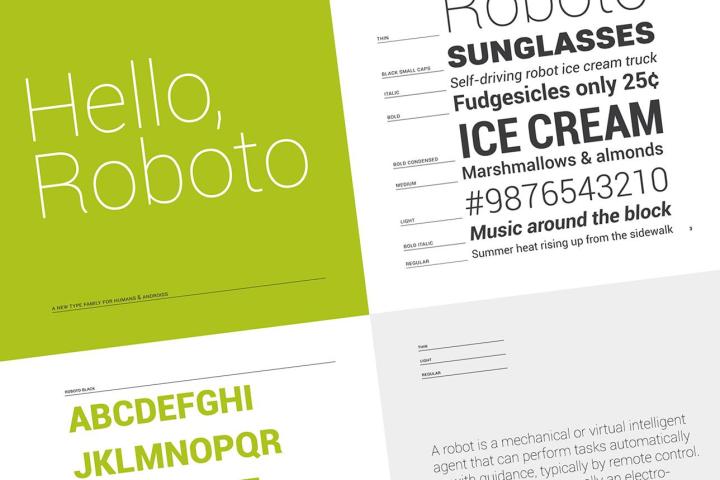
Google’s making available anything and everything necessary to modify Roboto to your heart’s content. It’s included a “revamped font production toolchain” for creating alternate variations of the font, plus a vastly expanded library of characters — the files include Latin, Cyrillic, and Greek characters, and more than triple the number of glyphs, more than 40,000 (3,350 per font) compared to the 13,000 (1,071 per font) found in earlier revisions.
“This project involved close collaboration between various teams at Google: Material Design, Internalization Engineering, Google Fonts and Android,” wrote Google text team member Roozbeh Pournader in a blog post. “With this launch, we are making Roboto a true open source project.”
Roboto, which Google released as part of Android 4.0 Ice Cream Sandwich under the Apache license, was designed to suite the pixel-dense displays just beginning to emerge at that time. Google design guru Matias Duarte described the custom-built, sans-serif font as having “a mechanical skeleton” and being “largely geometric” but with “sweeping semi-circular curves [that] give it a cheerful demeanor.”
Another high-profile font, Apple’s San Francisco on the Apple Watch, was sculpted with similar considerations in mind. “The system font was designed specifically for legibility,” read Apple’s human interface guide. “At large sizes, the fonts slightly condensed letters are set tight to take up less horizontal space. But at small sizes, they are spaced more loosely and have bigger apertures in glyphs like ‘a’ and ‘e’ to make these easier to read at a glance. Punctuation is also proportionally larger when the font gets smaller.” Rumors suggest future versions of iOS and OS X will adopt the font as default.
Unlike Google, Apple has announced no plans to release San Francisco under an open source license.

